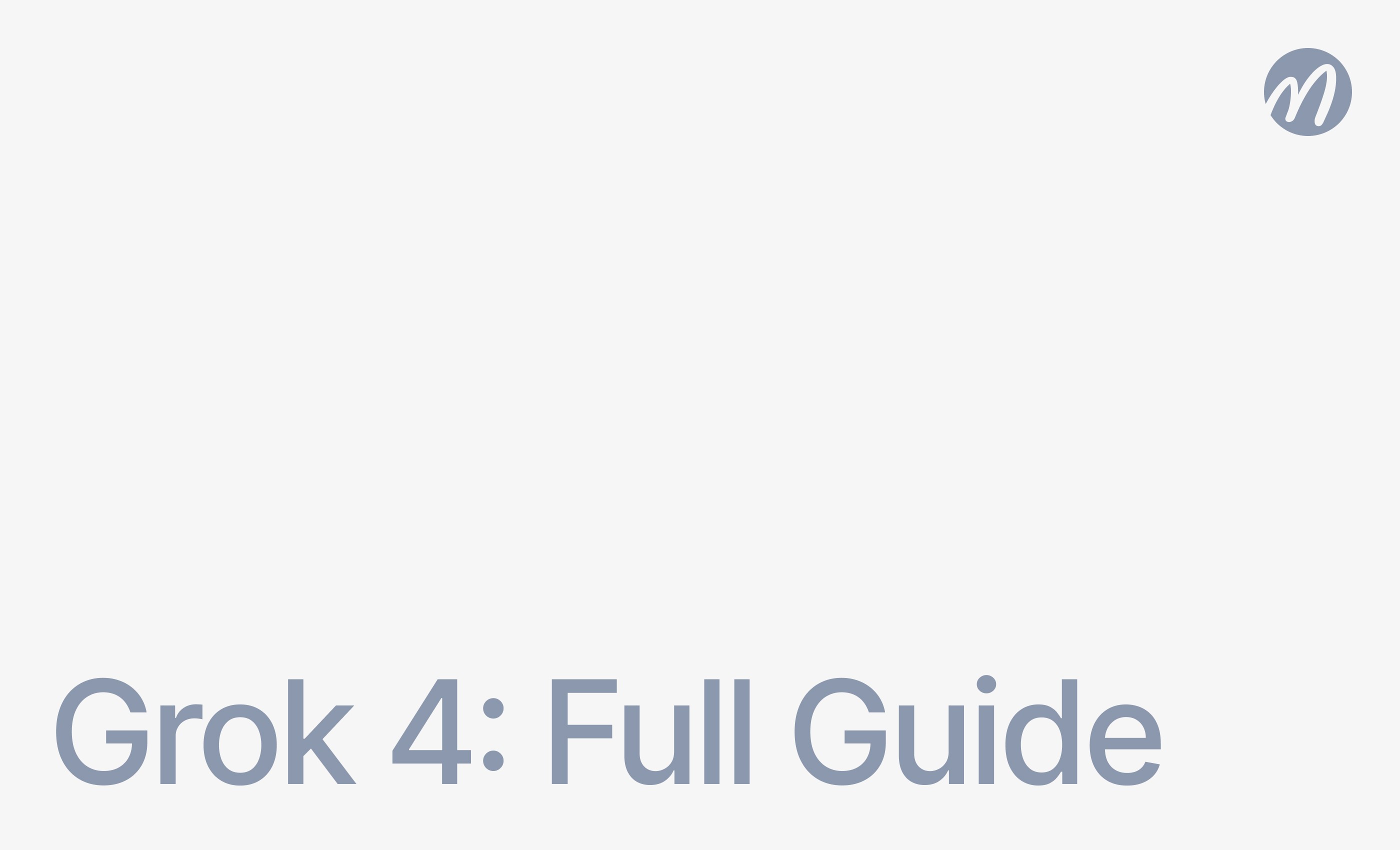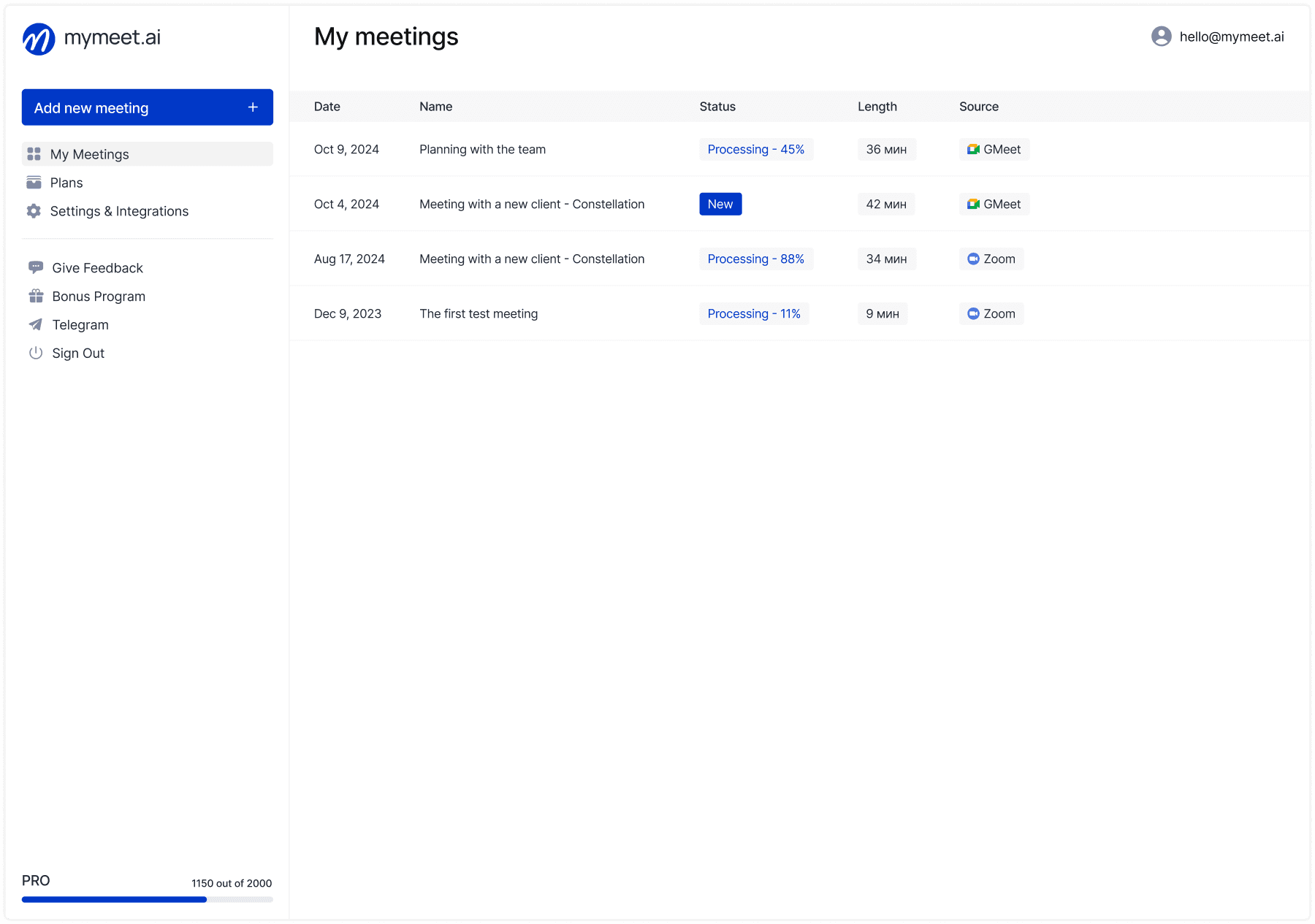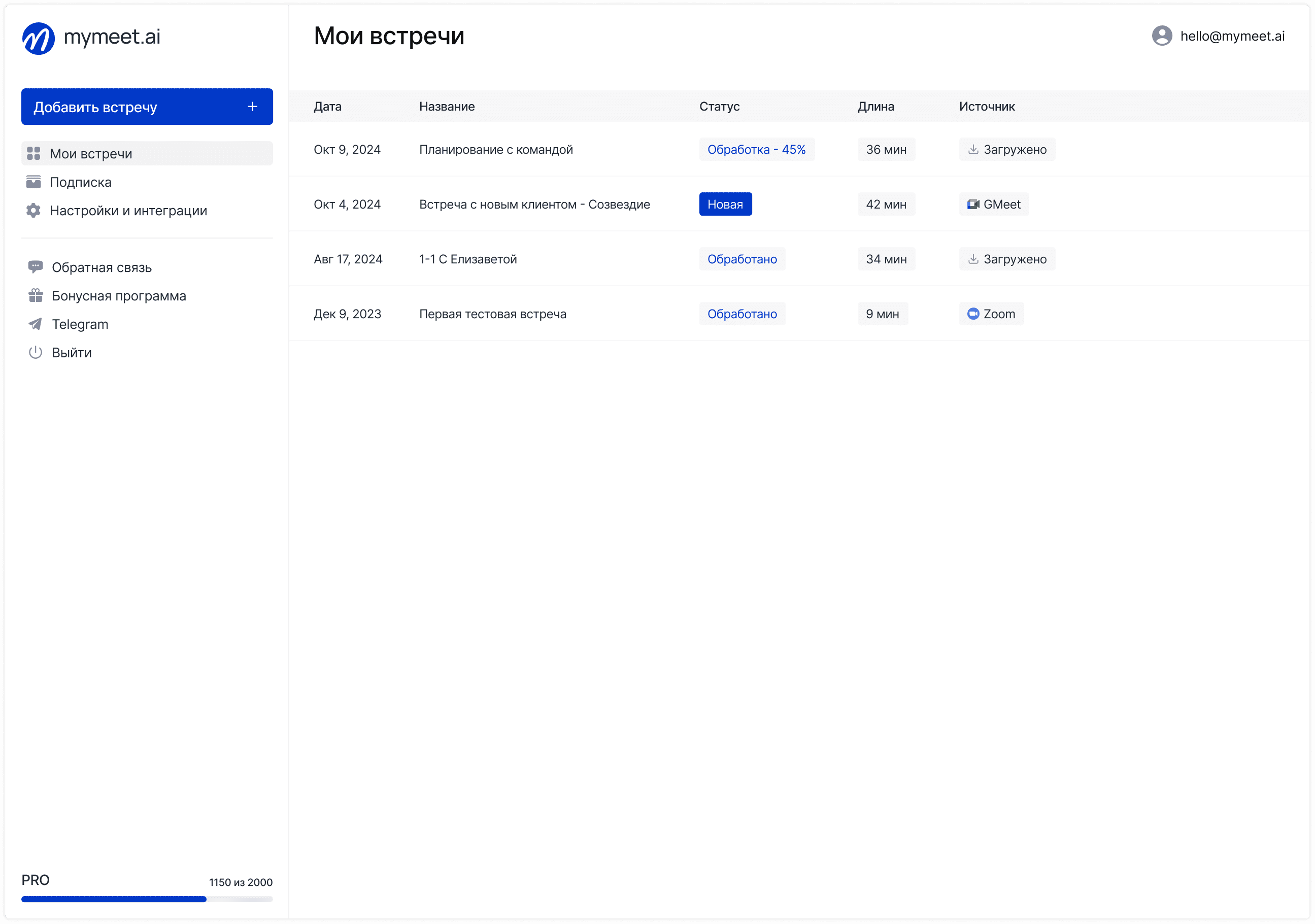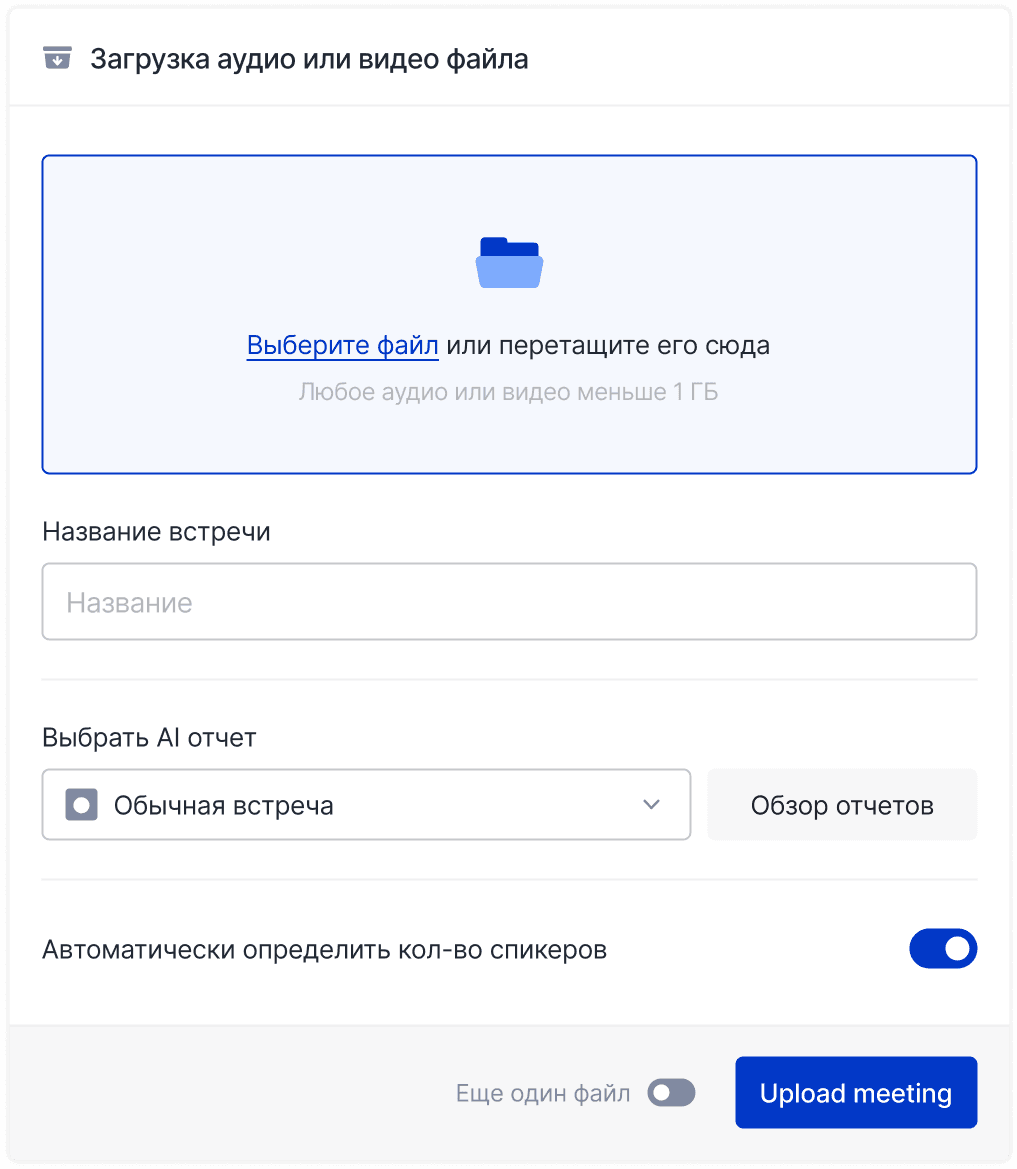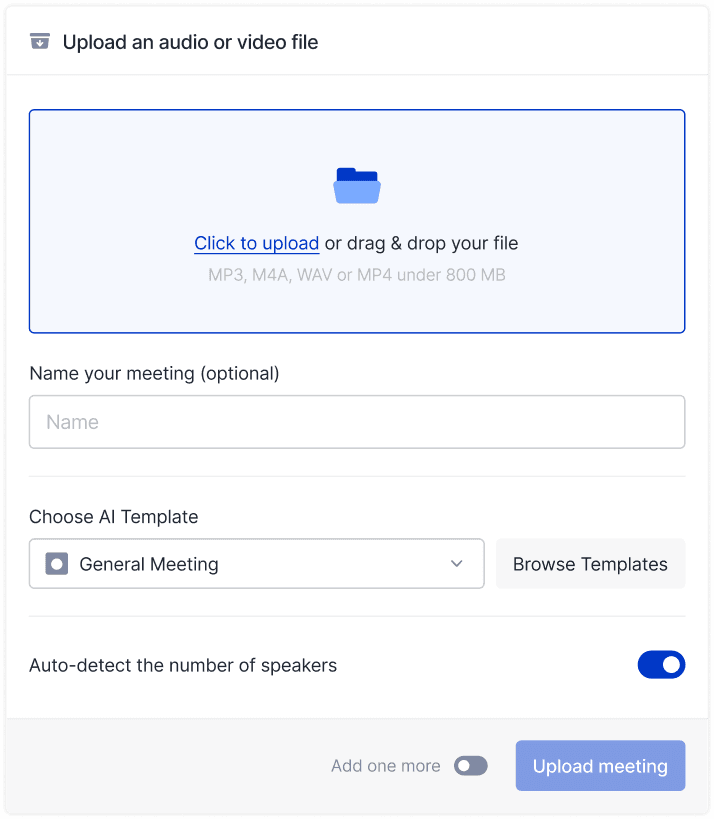Technology & AI

Radzivon Alkhovik
Apr 16, 2025

Recently, one of our clients shared a story. During a team meeting, they were discussing progress on three projects, distributing tasks, and deciding what to do about deadline delays. After the meeting, Andrey asked the AI chat a simple question: "What was discussed?" He received a decent but general answer.
Then his colleague Masha tried a different approach: "Create a table with tasks, deadlines, and responsible persons for all three projects." And she received a perfectly structured document, which she immediately sent to the entire team.
"It's all about how you ask the questions," Andrey told me in our conversation. And he's absolutely right.
I've experimented a lot with AI chat myself and noticed that certain phrasings work like a golden key — unlocking access to information exactly in the form you need it.
We talked to many users to understand which queries they find most useful and selected 15 champion formulations — those that deliver the most valuable results. This is a kind of cheat sheet for those who want to immediately get maximum value from AI chat.
Group 1: General Meeting Analysis
These prompts will help you quickly get structured information about key meeting outcomes, decisions made, and next steps.
1. "Create a brief summary of key decisions and agreements from the meeting"
Purpose: Perfect for a quick meeting digest. Especially useful if you joined a long meeting only at the end or want to refresh your memory about the main points.
Example result: AI chat will provide a concise summary with the main decisions, usually in the form of a bulleted list, sorted by importance or chronological order of discussion.
The launch of the new functionality has been postponed to October 15 due to the need for additional testing
The marketing campaign will begin two weeks before the launch (October 1)
Alexey will update the landing page design by September 25
Weekly status meetings are moved from Wednesday to Tuesday, 14:00
2. "Create a task distribution table with deadlines and responsible persons"
Purpose: Works great for project meetings where specific tasks are assigned. Immediately provides a ready document for tracking work.
Example result: A clear table with columns "Task," "Responsible Person," "Deadline," and sometimes "Status" or "Priority."
Task | Responsible Person | Deadline | Priority |
Update API documentation | Marina | 20.09.2025 | High |
Payment system integration | Dmitry | 05.10.2025 | Critical |
Mobile version loading speed optimization | Alexey | 15.10.2025 | Medium |
Press release preparation | Ekaterina | 28.09.2025 | High |
3. "What open questions remained unresolved after the meeting?"
Purpose: Helps not to miss important topics that were raised but did not receive a final decision. Great for preparing the agenda for the next meeting.
Example result: A list of unresolved issues with context and possible directions for resolution.
Open questions after the meeting:
The marketing campaign budget was not finally approved. Svetlana proposed 150,000 rubles, but Igor believes that at least 200,000 rubles is needed.
No one has been assigned responsibility for training the support service on the new functionality
The format for collecting feedback from early users remains unclear
4. "Make a list of all problems mentioned at the meeting and proposed solutions"
Purpose: Ideal for project meetings dedicated to solving specific problems or discussing difficulties in the project.
Example result: A systematic mapping of problems and solutions, where each challenge receives a constructive response.
Problem: High bounce rate on the registration page (56%) Proposed solutions:
Simplify the registration form by reducing the number of fields (proposed by Nikolai)
Add a progress indicator for multi-step registration (proposed by Anna)
Conduct A/B testing of different form versions (general solution)
Problem: Content delivery delays due to CDN issues Proposed solutions:
Consider alternative providers (Alexey mentioned Cloudflare and AWS)
Optimize the size of transmitted files (proposed by Mikhail)
5. "Create an action plan for the next week based on the discussion"
Purpose: Perfect for weekly planning meetings and status updates. Gives a clear picture of immediate next steps.
Example result: A structured plan indicating dates, priorities, and dependencies between tasks.
Plan for the week of September 18-24:
Monday, 18.09:
Finalization of requirements for new functionality (Responsible: Maria)
Start work on updating the main page design (Responsible: Anton)
Tuesday, 19.09:
Meeting with the development team to estimate timelines (All participants, 14:00)
Preparation of test scenarios (Responsible: Igor) [and so on for each day of the week]
Group 2: Analysis of Participant Contributions
These prompts will help you analyze in detail each meeting participant's contribution, analyze different perspectives, and track the development of the discussion.
6. "What main points did [participant name] make in their presentation?"
Purpose: Useful for in-depth analysis of professional presentations, reports, or strategic speeches.
Example result: A structured presentation of the key ideas and arguments of a specific participant.
Main points from Ekaterina's marketing strategy presentation:
Focus on content marketing will provide more long-term results than advertising campaigns
Need to increase presence in professional communities and industry events
Current conversion from social networks (0.8%) is below the market average (1.2%), need to revise SMM strategy
Proposal to redistribute 30% of the budget from contextual advertising to creating quality content
7. "Create a table of different participants' opinions on the issue of [topic]"
Purpose: Invaluable for comparing different positions on controversial issues or for making balanced decisions based on different expert assessments.
Example result: A comparative table with participants' opinions on a specific topic.
Participant | Position on redesign | Key arguments |
Anna (designer) | For complete redesign | 1. Outdated visual language 2. Low engagement metrics 3. Inconsistency with new brand positioning |
Mikhail (developer) | For gradual updates | 1. Risks to current conversion 2. High team workload 3. Preference for A/B testing each change |
Olga (product) | For partial redesign | 1. Focus on problematic sections 2. Need to update mobile version UX 3. Importance of maintaining recognizability for existing users |
8. "What disagreements arose between participants when discussing [topic]?"
Purpose: Helps identify tension points and different approaches to solving problems. Useful for subsequently resolving contradictions.
Example result: A structured description of different positions and points of disagreement.
Disagreements when discussing the strategy for entering new markets:
Sequence of market entry:
Alexey (CEO) insisted on simultaneous launch in 3 countries to save resources
Maria (CMO) advocated for sequential entry, starting with one country, for testing and adapting the strategy
Budget distribution:
Dmitry (CFO) proposed equal distribution of the budget between markets
Svetlana (regional director) argued for distribution proportional to market size
Product localization:
Technical department considers interface translation sufficient
Marketing department insists on full adaptation to local characteristics and preferences
9. "What arguments did [participant name] provide in support of their position?"
Purpose: Allows deeper understanding of the logic and rationale behind a certain point of view. Useful for decision-making and preparing counterarguments.
Example result: A detailed analysis of a specific participant's argumentation.
Alexey's arguments in favor of changing the technology stack:
Technical advantages:
Increasing application performance by at least 30% according to benchmark results
Reducing code volume by approximately 25% due to more modern patterns
Improving system scalability to prepare for load growth
Economic factors:
Reducing server infrastructure costs by approximately 40%
Ability to attract more qualified developers without increasing the budget
Strategic considerations:
Need to comply with modern standards for competitiveness
Prevention of technical debt that will accumulate if the current stack is maintained
10. "How did [participant name]'s opinion change during the discussion?"
Purpose: Allows tracking the evolution of a point of view and understanding which arguments proved most convincing.
Example result: A chronological description of the change in a participant's position.
Evolution of Maria's position on increasing the development budget:
At the beginning of the discussion (00:05):
Categorically opposed to increasing the development budget
Argued for the need to focus on marketing initiatives
Proposed postponing new features until the next quarter
After Dmitry's presentation (00:23):
Recognized the importance of updating the technical infrastructure
Still doubted the priority compared to marketing tasks
Proposed a compromise: reduce the scope of work but start immediately
By the end of the discussion (01:10):
Agreed with the need to increase the technical budget by 15%
Proposed redistributing part of the marketing budget to technical modernization
Set a condition: measurable results for performance improvement within 2 months
Group 3: Material Preparation
These prompts will help you quickly create various documents and materials based on the content of the meeting.
11. "Prepare the structure of a follow-up email with meeting results"
Purpose: Saves time on composing reports after meetings. Ensures a common understanding of results among all participants.
Example result: A ready-to-use email template that can be slightly modified and sent.
Subject: Q4 Planning Meeting Results, 15.09.2025
Dear colleagues!
Thank you all for participating in yesterday's meeting on planning for the 4th quarter. Below is a brief summary of the main decisions and next steps:
Key decisions:
Q4 budget approved at 3.2 million rubles
New functionality launch agreed for October
PR campaign strategy approved for November
Task distribution: [List of tasks with responsible persons and deadlines]
Open questions requiring resolution: [List of unresolved issues]
Next meeting: 22.09.2025, 14:00
If you have any questions or comments, please let me know.
Best regards, [Your name]
12. "Create a progress tracker table for tasks discussed at the meeting"
Purpose: Provides visual tracking of task completion. Convenient for inclusion in project management systems.
Example result: A detailed table with information about tasks, status, dependencies, etc.
ID | Task | Responsible | Deadline | Status | Dependencies | Comments |
T1 | Design system update | Anna | 30.09.2025 | Not started | - | High priority |
T2 | Technical documentation writing | Mikhail | 10.10.2025 | Not started | T1 | Consultation with Dmitry needed |
T3 | Analytics tools integration | Alexey | 15.10.2025 | Not started | - | Choose between Google Analytics 4 and Amplitude |
T4 | Functionality testing | Svetlana | 20.10.2025 | Not started | T1, T2, T3 | Involve focus group |
13. "Formulate the main points for a presentation based on the discussion results"
Purpose: Helps quickly prepare a presentation structure based on the meeting held. Useful for reports to management or clients.
Example result: A structured presentation plan with key points.
User experience research results presentation structure:
Slide 1: Introduction
Research goals: identifying user pain points and prioritizing improvements
Methodology: 15 in-depth interviews, analysis of 200+ reviews, analytics data
Slides 2-3: Key findings
78% of users experience difficulties navigating the personal account
65% do not use the data export function due to non-obvious interface
92% highly rate the application's speed
Slides 4-5: Pain points and their priorities
Critical problems: [list with explanation]
Medium importance problems: [list with explanation]
Slides 6-7: Recommendations
Short-term improvements (up to 1 month)
Medium-term changes (1-3 months)
Long-term strategic initiatives
Slide 8: Implementation plan
Proposed sequence of changes
Required resources and timelines
Slide 9: Expected results
Forecast of metric improvements: reduction in bounce rate by 15%, increase in conversion by 10%
Qualitative improvements in user experience
Slide 10: Questions and discussion
14. "Make a list of questions to clarify at the next meeting"
Purpose: Helps prepare for continuing the discussion. Ensures that important points will not be missed.
Example result: A structured list of questions grouped by topic.
Questions to clarify at the next meeting (25.09.2025):
Regarding technical development:
What resources are needed to accelerate work on the automatic recognition feature?
Finalize the list of integrations to include in the release
Clarify bug fix priorities between versions 2.4 and 3.0
Regarding marketing strategy:
Determine the exact budget for contextual advertising in Google and Yandex
Agree on key messages for the PR campaign
Decide on engaging an external PR agency or using internal resources
Regarding organizational issues:
Clarify the format and frequency of project reporting
Agree on a date for the demo for key clients
Determine who is responsible for coordination with international offices
15. "Create a comparative table of all solutions to the [topic] problem proposed at the meeting"
Purpose: Helps systematize various proposals and evaluate them according to different criteria. Ideal for decision-making.
Example result: A comparative table with solution options and their evaluation according to various parameters.
Solution option | Proposed by | Pros | Cons | Required resources | Implementation timeline |
Complete platform update | Alexey | - Modern architecture - Solving all current problems - Future-proofing | - High risks - Need to retrain the team - Possible migration problems | 4 developers, 2 designers, 1 QA | 4-6 months |
Partial modernization | Maria | - Lower risks - Phased implementation - Possibility of quick rollback | - Technical debt remains - Additional costs in the future | 2 developers, 1 QA | 2-3 months |
Development outsourcing | Igor | - Quick launch - External expertise - Minimal team load | - High cost - Dependence on contractor - Quality risks | Budget for contractor + 1 internal coordinator | 3 months |
Tips for Formulating Effective Prompts
After analyzing thousands of queries to AI chat, we've identified several principles that make your prompts maximally effective:
1. Use specific names and titles
The more precise your query, the more relevant the answer will be. Instead of the general "What was discussed at the meeting?", ask "What decisions were made regarding the rebranding project?" or "What arguments did Alexey provide regarding the platform change?"
2. Specify the desired response format
AI chat can present information in different formats. If you need a table, list, or chronology — directly specify this in the query: "Create a table with...", "Make a numbered list...", "Present in chronological order..."
3. Focus on one aspect in each question
Avoid compound questions. It's better to ask several specific questions sequentially than one complex one. For example, instead of "Tell me about problems, solutions, and tasks," first ask about problems, then about solutions, and then about tasks.
4. Use the context of previous answers to deepen analysis
AI chat remembers previous questions and answers within one session. Use this for step-by-step deepening. For example, after receiving a list of problems, you can ask: "Detail the third problem from the list above" or "What solutions were discussed for the first two problems?"
How to Combine Prompts for Complete Meeting Analysis
The real power of AI chat is revealed through the sequential application of different prompts. Here's an example of an effective sequence of queries after an important meeting:
Start with a general overview: "Create a brief summary of key decisions from the meeting"
Clarify details: "Create a task distribution table with responsible persons and deadlines"
Identify risks: "What potential problems were discussed during project planning?"
Prepare communication: "Prepare the structure of a follow-up email with meeting results"
Prepare for the next step: "Make a list of questions to clarify at the next meeting"
Such a sequence will give you a complete picture of the meeting, help organize further work, and prepare communication for the team.
Start Using AI Chat Right Now
AI chat is available to all mymeet.ai users:
On Free and Lite plans you can make 10 introductory queries (non-renewable)
On Pro and Ultra plans, AI chat functionality is available without limitations
No additional settings needed — upload the meeting recording, wait for the transcript to be created, and go to the "AI Chat" tab.
Three steps to get started:
Log in to your mymeet.ai account or register for free
Upload a meeting recording or open one that has already been processed
Go to the "AI Chat" tab and ask your first question
Radzivon Alkhovik
Apr 16, 2025

